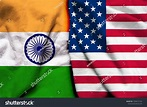TopIndia USA Relations Blog Indo America Im Ties n Impact USA Indie Ties
Indo-American Impact:Best USA India Blog India USA PartnershipShared Strengths of world's two largest democracies, share a unique and evolving relationship that spans economic, political, and trade spheres. India USA Ties Over Decades The affinity between these nations is based beyond shared democratic values as also on mutual interests and growing interdependence of economic, technological and geopolitical affinity. Trump Modi robust relationship continues
Followers& Contributors
Monday, March 3, 2025
Thursday, February 27, 2025
The Indo-American Impact: Shaping the Future of Two DemocraciesIndia and the United States, the world's two largest democracies, share a unique and evolving relationship that spans economic, political, and cultural spheres. As we look at India's past, present, and future impact on America, it's clear that the affinity between these nations is not just based on shared democratic values but also on mutual interests and growing interdependence. Economic ObjectivesIndia's economic trajectory has been nothing short of remarkable. Projected to become the world's third-largest economy by the end of this decade, India presents immense opportunities for U.S. businesses[1]. The Biden Administration has effectively managed this relationship by resolving trade disputes and encouraging American companies to "friend share" investments in India, even in strategic sectors like solar panels and semiconductorsLooking ahead, both nations should focus on:1. Strengthening economic ties through increased bilateral trade2. Collaborating on emerging technologies and innovation3. Promoting India's inclusion in key economic forums like the G7 and OECD[1## Political ObjectivesThe U.S.-India partnership represents a strategic convergence driven by shared interests and values, particularly in deterring China's hegemonic designs[1]. However, the relationship remains fragile and requires careful nurturing[ Key political objectives include:1. Enhancing cooperation within the Quadrilateral Security Dialogue (Quad)2. Addressing mutual concerns, such as India's apprehensions about U.S. engagement with Pakistan3. Collaborating on global issues like climate change and public health## Cultural ObjectivesThe cultural ties between India and the U.S. are deeply rooted and continue to flourish. The Indian American community, now the fastest-growing racial voting bloc in America, plays a crucial role in shaping this relationship. Cultural objectives should focus on:1. Fostering people-to-people connections through education and cultural exchanges2. Leveraging the influence of the Indian diaspora in the U.S.3. Promoting mutual understanding of each other's democratic traditions and values## The Affinity Between Two DemocraciesThe shared democratic nature of India and the U.S. has been a significant driver in their partnership. This affinity is reflected in various ways:1. Cross-partisan support for U.S.-India ties in both countries2. Collaboration in multilateral organizations and on global issues3. A shared commitment to a rules-based international orderAs an earlierU.S. Ambassador to India Eric Garcetti noted, "Americans poll better in India than Americans do in America," highlighting the strong positive sentiment between the two nationsWhile challenges remain, including concerns about democratic backsliding in both countries, the foundation of shared democratic values provides a robust platform for future cooperation. As the world's largest democracies, India and the U.S. have a unique opportunity to demonstrate that development and democracy can go hand in hand, setting an example for the global community.
Subscribe to:
Comments (Atom)
Asian Indians Contributions in USA over decades
The Impact of Asian Indians on America: A Story of Success and Contribution Over the past century, Asian Indians have significantly contrib...

-
The Indo-American Impact: Shaping the Future of Two Democracies India and the United States, the world's two largest democracies, shar...
-
https://youtube/sl1od6MbQSA?si=XyIib1aHdKqaC4Ps India America Affinity https://youtu.be/sl1od6MbQSA?si=XyIib1aHdKqaC4Ps https://youtu.be/s...
-
The Impact of Asian Indians on America: A Story of Success and Contribution Over the past century, Asian Indians have significantly contrib...







